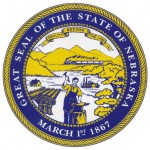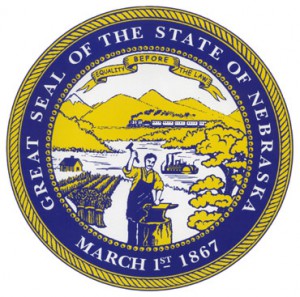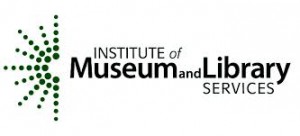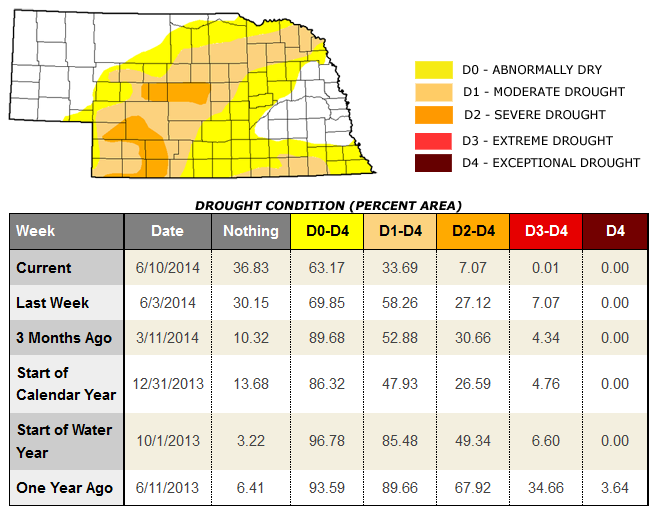Search the Blog
Categories
- Books & Reading
- Broadband Buzz
- Census
- Education & Training
- General
- Grants
- Information Resources
- Library Management
- Nebraska Center for the Book
- Nebraska Memories
- Now hiring @ your library
- Preservation
- Pretty Sweet Tech
- Programming
- Public Library Boards of Trustees
- Public Relations
- Talking Book & Braille Service (TBBS)
- Technology
- Uncategorized
- What's Up Doc / Govdocs
- Youth Services
Archives
Subscribe
Category Archives: Information Resources
New Government Publications Received at the Library Commission
Dining Out
Did you run out and pick up lunch today? Do you plan to eat out tonight? Are you out on the road and need a place to eat?
 People have had a variety of choices for cafes, restaurants, steak houses, etc. in Nebraska over the years. Options included formal and informal. Al fresco dining outside this restaurant was offered in the early 1900s. The photograph to the left captures a crowd at a restaurant offering an outside lunch counter option (Nebraska State Historical Society Collection). Photographer John Nelson took many pictures in the area surrounding Wheeler County where he lived.
People have had a variety of choices for cafes, restaurants, steak houses, etc. in Nebraska over the years. Options included formal and informal. Al fresco dining outside this restaurant was offered in the early 1900s. The photograph to the left captures a crowd at a restaurant offering an outside lunch counter option (Nebraska State Historical Society Collection). Photographer John Nelson took many pictures in the area surrounding Wheeler County where he lived.
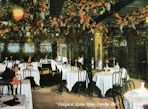
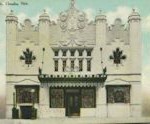 More formal dining at about the same time was in order at the Vineyard in Omaha’s Rome Hotel at 16th and Jackson Streets, shown in the postcard far left. The wait staff there may have been as numerous as that of the Calumet Restaurant (1411-1413 Douglas Street, Omaha) shown in the postcard bottom left. Tolf Hanson, after selling the Calumet to his brother-in-law, opened Hanson’
More formal dining at about the same time was in order at the Vineyard in Omaha’s Rome Hotel at 16th and Jackson Streets, shown in the postcard far left. The wait staff there may have been as numerous as that of the Calumet Restaurant (1411-1413 Douglas Street, Omaha) shown in the postcard bottom left. Tolf Hanson, after selling the Calumet to his brother-in-law, opened Hanson’ s Cafe in 1908, a tony restaurant that didn’t quite catch on despite extensive, expensive interior renovations. The building now houses the Omaha’s oldest Chinese restaurant at 315 S. 16th Street. (Omaha Public Library Collection)
s Cafe in 1908, a tony restaurant that didn’t quite catch on despite extensive, expensive interior renovations. The building now houses the Omaha’s oldest Chinese restaurant at 315 S. 16th Street. (Omaha Public Library Collection)
Steak houses have also been big in Nebraska for a number of years. 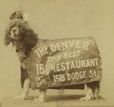 The Denver Chop House at 1518 Dodge Street, used cutting edge advertising in 1894, to promote their 15 Cent Restaurant on the postcard at the top left (Omaha
The Denver Chop House at 1518 Dodge Street, used cutting edge advertising in 1894, to promote their 15 Cent Restaurant on the postcard at the top left (Omaha 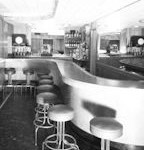 Public Library Collection). Opening somewhat later, Gorat’s Steakhouse, 4917 Center Street, Omaha, was and is a popular dining establishment. Cooks in the basement kitchen of Gorat’s Steak House cut generous portions of steak in the 1949 photograph at the left.
Public Library Collection). Opening somewhat later, Gorat’s Steakhouse, 4917 Center Street, Omaha, was and is a popular dining establishment. Cooks in the basement kitchen of Gorat’s Steak House cut generous portions of steak in the 1949 photograph at the left. 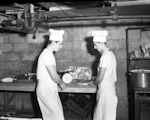 While upstairs in the photograph to the right, patrons could enjoy a drink at the sleek bar before eating. (The Durham Museum Collection)
While upstairs in the photograph to the right, patrons could enjoy a drink at the sleek bar before eating. (The Durham Museum Collection)
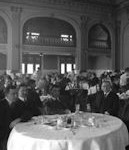
 In Lincoln, businessmen could eat formally in the Commercial Club dining room on an upper floor of 1110 P Street as they do in the photograph to the left. Or someone in a hurry could grab a bite at the Jenquenz Sanitary Lunch Car a few blocks away at 222 S. 11th Street shown in the photograph to the right. (Townsend Studio Collection)
In Lincoln, businessmen could eat formally in the Commercial Club dining room on an upper floor of 1110 P Street as they do in the photograph to the left. Or someone in a hurry could grab a bite at the Jenquenz Sanitary Lunch Car a few blocks away at 222 S. 11th Street shown in the photograph to the right. (Townsend Studio Collection)
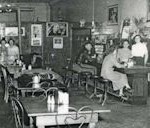
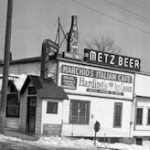 Locals and teenagers had their own favorite hangouts. Mrs. Tony’s Cafe in Fairmont with its pinball machine was popular with young people in town shown at left. (Fairmont Public Library Collection) Marchio’s Italian Cafe was part of the neighborhood at 13th and J Streets in Omaha, photograph to the right. (The Durham Museum Collection)
Locals and teenagers had their own favorite hangouts. Mrs. Tony’s Cafe in Fairmont with its pinball machine was popular with young people in town shown at left. (Fairmont Public Library Collection) Marchio’s Italian Cafe was part of the neighborhood at 13th and J Streets in Omaha, photograph to the right. (The Durham Museum Collection) 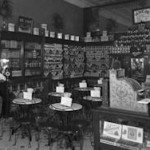 And anyone wanting something from the soda fountain had many choices in Lincoln, including Joe Gatto’s Store, to the left. (Townsend Studio Collection)
And anyone wanting something from the soda fountain had many choices in Lincoln, including Joe Gatto’s Store, to the left. (Townsend Studio Collection)
So, where are we going and what’s for dinner?
Visit Nebraska Memories to search for or browse through many more historical images digitized from photographs, negatives, postcards, maps, lantern slides, books and other materials.
Nebraska Memories is a cooperative project to digitize Nebraska-related historical and cultural heritage materials and make them available to researchers of all ages via the Internet. Nebraska Memories is brought to you by the Nebraska Library Commission. If your institution is interested in participating in Nebraska Memories, see http://nlc.nebraska.gov/nebraskamemories/participation.aspx for more information, or contact Beth Goble, Historical Projects Librarian, or Devra Dragos, Technology & Access Services Director.
Posted in General, Information Resources, Nebraska Memories
Leave a comment
This day in history…
Today marks the 100th anniversary of the opening of the Panama Canal. Below is a poster sent out by the U.S. Census Bureau to commemorate this remarkable feat of engineering.
Doc Spot: New Website “Executive Orders and Other Presidential Documents: Sources and Explanations”
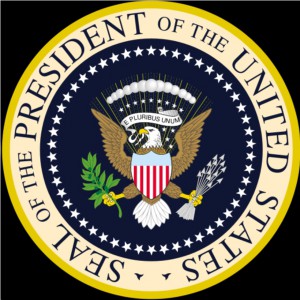 The Legislative Research Special Interest Section of the Law Librarians Society of Washington, D.C., Inc. (LLSDC) is pleased to announce the availability of a new website entitled “Executive Orders and Other Presidential Documents: Sources and Explanations.” The site attempts to briefly lay out and link to all major sources for these materials which includes Presidential directives, proclamations, signing statements, executive orders, memoranda, and other documents. In addition the site links to many sources, such as CRS reports, that explain these documents.
The Legislative Research Special Interest Section of the Law Librarians Society of Washington, D.C., Inc. (LLSDC) is pleased to announce the availability of a new website entitled “Executive Orders and Other Presidential Documents: Sources and Explanations.” The site attempts to briefly lay out and link to all major sources for these materials which includes Presidential directives, proclamations, signing statements, executive orders, memoranda, and other documents. In addition the site links to many sources, such as CRS reports, that explain these documents.
While the sections listed on the new website are available online, the Nebraska Library Commission does also have three of the titles in print format: The Code of Federal Regulations – Title 3 – Presidential Documents ; the Federal Register ; and Public Papers of the President. These titles, and thousands of other state and federal publications, are available either in print or online through the Nebraska Publications Clearinghouse. Feel free to browse the catalogs, or give us a call and we’ll be happy to help you find what you’re looking for.
Donating to Nebraska Memories
Do you have some neat historical photos, postcards or documents at home that you think would be good additions to Nebraska Memories? Are you willing to donate them to the Library Commission? If yes, read on.
Most of the content in Nebraska Memories comes from non-profit organizations contributing images of materials that they retain ownership of. Did you know that now we also accept donations of pre-approved historical, Nebraska-related materials from individuals? These items may include photographs, negatives, postcards, maps, and documents such as letters, diaries, deeds, diplomas, and event programs.
We recently added a new collection to Nebraska Memories called Donated Materials which currently includes photographs, postcards, and autograph albums. Click on the Browse this Collection button and click on the thumbnail images to see what we have so far.
The three items shown here were donated by Vicki Witmer, who is credited in the image descriptions as the donor. Two are postcards of landmarks in the town of Havelock Nebraska, which was founded in 1893. The photos were taken in the 1920’s before Havelock was annexed by the city of Lincoln in 1930.
 I am fascinated by the turntable in the Burlington Yards postcard., and imagine huge engines rotating on it while being worked on or turned around to begin a new journey in the other direction.
I am fascinated by the turntable in the Burlington Yards postcard., and imagine huge engines rotating on it while being worked on or turned around to begin a new journey in the other direction. 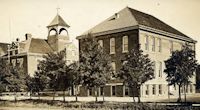 I can also imagine children of railroad workers, most of whom probably lived in Havelock, walking to the nearby Public School while a parent (likely the father) walked to work at the yards. The school building looks rather forbidding, but many did in those days.
I can also imagine children of railroad workers, most of whom probably lived in Havelock, walking to the nearby Public School while a parent (likely the father) walked to work at the yards. The school building looks rather forbidding, but many did in those days.
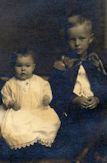 This Dole Studio, Lincoln portrait of Enid and Neil Holt was also taken in the 1920’s. Could they have lived in Havelock? I hope seeing these donated images whets your appetite for helping us tell Nebraska’s story. If you have Nebraska –related historical items that you would like to donate, follow this link for more information. http://nlc.nebraska.gov/nebraskamemories/donations.aspx
This Dole Studio, Lincoln portrait of Enid and Neil Holt was also taken in the 1920’s. Could they have lived in Havelock? I hope seeing these donated images whets your appetite for helping us tell Nebraska’s story. If you have Nebraska –related historical items that you would like to donate, follow this link for more information. http://nlc.nebraska.gov/nebraskamemories/donations.aspx
Visit Nebraska Memories to search for or browse through many more historical images digitized from photographs, negatives, postcards, maps, lantern slides, books and other materials.
Nebraska Memories is a cooperative project to digitize Nebraska-related historical and cultural heritage materials and make them available to researchers of all ages via the Internet. Nebraska Memories is brought to you by the Nebraska Library Commission. If your institution is interested in participating in Nebraska Memories, see http://nlc.nebraska.gov/nebraskamemories/participation.aspx for more information, or contact Beth Goble, Historical Projects Librarian, or Devra Dragos, Technology & Access Services Director.
Posted in General, Information Resources, Nebraska Memories
1 Comment
New Government Publications Received at the Library Commission
Do you have 10 minutes to help us transcribe a handwritten inscription?
 Recently we added two autograph albums to Nebraska Memories. The albums belonged to May Martin Ellis and her husband John Ellis. They contain many handwritten inscriptions with the majority of inscriptions dating from the late 1800’s. While it is fun to read the inscriptions it can also be a challenge to read some of the handwriting. We would like to remove this challenge by providing a typed transcription of each page. Typing the transcriptions is a bit of a daunting task however because there are about 150 pages between the two albums and each page was written by a different person. The quality of handwriting varies from page to page so some are easy to read while others take a bit more effort.
Recently we added two autograph albums to Nebraska Memories. The albums belonged to May Martin Ellis and her husband John Ellis. They contain many handwritten inscriptions with the majority of inscriptions dating from the late 1800’s. While it is fun to read the inscriptions it can also be a challenge to read some of the handwriting. We would like to remove this challenge by providing a typed transcription of each page. Typing the transcriptions is a bit of a daunting task however because there are about 150 pages between the two albums and each page was written by a different person. The quality of handwriting varies from page to page so some are easy to read while others take a bit more effort.
 To help with the task of transcribing these albums we wanted to try using crowdsourcing. If you are not familiar with crowdsourcing in this context it is a way to divide up the labor of transcribing the text among a group of people who are willing to give a few minutes of their time to the project. This is not a new concept but it is the first time we are trying it and hope you will be willing to help us.
To help with the task of transcribing these albums we wanted to try using crowdsourcing. If you are not familiar with crowdsourcing in this context it is a way to divide up the labor of transcribing the text among a group of people who are willing to give a few minutes of their time to the project. This is not a new concept but it is the first time we are trying it and hope you will be willing to help us.
What do you get out of helping with this project? To start with you get the enjoyment of reading a page or two in the autograph books. While I haven’t read all of the pages yet here is one inscription that I found amusing. This is from page 42 of May’s album.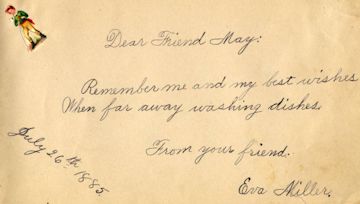
Dear Friend May:
Remember me and my best wishes
When far away washing dishes.
From your friend.
Eva Miller.
July 26th 1885.
Second, by helping to create a typed transcription we are making both the inscriptions and the name of the person who wrote them legible, searchable and findable. After the pages have been transcribed we will add the transcribed text to the corresponding album page in Nebraska Memories.
Third, if your relatives lived in Nebraska during the late 1800’s maybe you will find an inscription they wrote. Many of the inscriptions include both a date and place name. Some of the place names I’ve seen include: Alliance, Box Butte, Genoa, Hemingford, Osceola, and Grand Lake (According to information on the Nebraska State Historical Site’s webpage Grand Lake was located near Alliance.)
If you are up to the challenge here is how you can help. We have set up a Google form for each album so we can easily collect the transcribed text and then display the text in a corresponding spreadsheet. You do not need a Google account to help us. Everything you do is anonymous. We have no way of tracking who has helped us with this project. Here is what you need to get started.
Links That You Will Need – Please make sure you read the instructions below.
May Martin Ellis Album
UPDATE: Thanks to everyone’s help the May Martin Ellis Album is done.
Album: http://memories.nebraska.gov/cdm/ref/collection/donated/id/127
Spreadsheet: http://goo.gl/ZVFXwx
Form: http://goo.gl/ebYc52
John Ellis Album
UPDATE: Thanks to everyone’s help the John Ellis Album is done.
Album: http://memories.nebraska.gov/cdm/ref/collection/donated/id/178
Spreadsheet: http://goo.gl/TOvyi2
Form: http://goo.gl/D2rDfx
Instructions
- Open either May’s or John’s spreadsheet. On the spreadsheet you will see a column labeled Page. If a page number is listed in the spreadsheet that means the page has been transcribed. You will see the transcription in the corresponding column. Determine which page or pages need to be transcribed.
- Open the corresponding album and locate a page you want to transcribe.
- Open the corresponding form. Enter the number of the page you are transcribing and then type the text as it is written.
- Press the enter key at the end of each line.
- Do NOT correct misspellings, grammar errors, punctuation, odd capitalization or anything else we may consider wrong. I know this may be the hardest part for some folks but it is important that you type the text exactly as it was written. For example I’ve seen a couple of folks who have written the word tomorrow as two separate words. In May’s book on page 6 her Pa wrote it as “to Morrow”. That’s the way it needs to be typed.
 If you cannot read a word, letter or are unsure of something please put a question mark in the transcription at the point you have the question. The question mark will be a signal to us that someone else will need to look at that text. For example if I was transcribing page 20 of John’s book there is a line where I would need to insert a question mark because I’m not sure what is written between the word in and albums. In the form I would enter: If scribbling in ? Albums:
If you cannot read a word, letter or are unsure of something please put a question mark in the transcription at the point you have the question. The question mark will be a signal to us that someone else will need to look at that text. For example if I was transcribing page 20 of John’s book there is a line where I would need to insert a question mark because I’m not sure what is written between the word in and albums. In the form I would enter: If scribbling in ? Albums: Some folks wrote at all kinds of odd angles. You may need to rotate or zoom in on the text to make it easier to read. Use the buttons on the toolbar above the image to do this. Put the text in the order you think is most logical.
Some folks wrote at all kinds of odd angles. You may need to rotate or zoom in on the text to make it easier to read. Use the buttons on the toolbar above the image to do this. Put the text in the order you think is most logical.- If you see a transcription in the spreadsheet with a questions mark in it and you want to try deciphering that page please go ahead and try. Multiple forms can be submitted for each page. We will be looking at all of the transcriptions before they are added to Nebraska Memories.
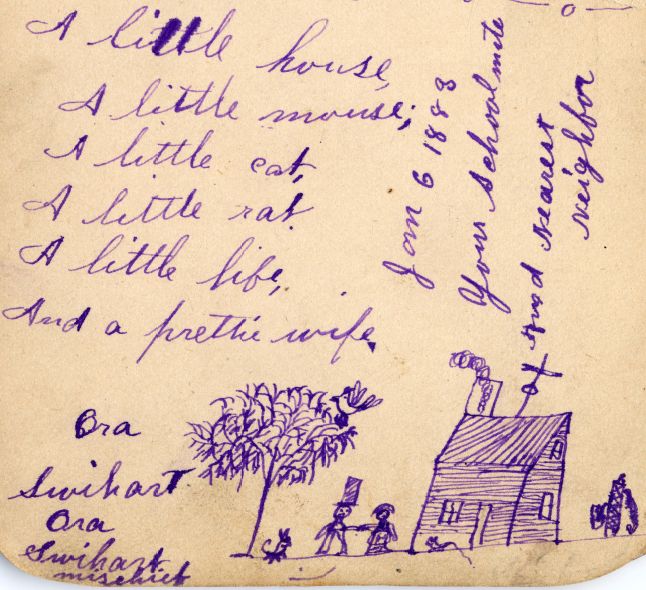 Now that you have spent five minutes reading this I hope you will be willing to spend 5 more minutes transcribing a page or two in the albums. You never know what funny saying you may transcribe.
Now that you have spent five minutes reading this I hope you will be willing to spend 5 more minutes transcribing a page or two in the albums. You never know what funny saying you may transcribe.
Thank for your help. If you have any questions please leave a comment or send me an email.
Visit Nebraska Memories to search for or browse through many more historical images digitized from photographs, negatives, postcards, maps, lantern slides, books and other materials.
Nebraska Memories is a cooperative project to digitize Nebraska-related historical and cultural heritage materials and make them available to researchers of all ages via the Internet. Nebraska Memories is brought to you by the Nebraska Library Commission. If your institution is interested in participating in Nebraska Memories, see http://nlc.nebraska.gov/nebraskamemories/participation.aspx for more information, or contact Beth Goble, Historical Projects Librarian, or Devra Dragos, Technology & Access Services Director.
Posted in General, Information Resources, Nebraska Memories, Technology
1 Comment
Congress Passes Legislation Recognizing Libraries in Workforce Development
Congress recently took a giant leap forward to improve the delivery of job training and workforce development by passing the Workforce Innovation and Opportunity Act of 2014 (WIOA). Overwhelmingly approved by both the House and the Senate and supported by the President, the legislation is the result of a bipartisan agreement that recognizes the vital role our government plays in providing the services and resources job seekers need to access the kinds of skills training, career information, and education that are required for today’s job market.
The bill includes several exciting changes that update past workforce development laws and better coordinate federal resources by modernizing job training and identifying strategic workforce investments. IMLS has long recognized and supported the services libraries provide to help the American workforce rebound. And it is especially gratifying to see lawmakers from both sides of the aisle acknowledge the essential connection of public libraries to communities as career improvement partners in WIOA.
For public libraries, the new bill identifies them as eligible for funds as One-Stop partners with the ability to provide an expansive array of job search services. Also, it recognizes libraries as important providers of federally supported training and employment services for adult education and literacy. The legislation instructs State and Local Workforce Development Boards to boost “digital literacy skills” at training centers—the very definition of “digital literacy” originates from the law that created IMLS and is referenced in WIOA!
We are delighted that the public library’s role in improving our workforce development system has been acknowledged. IMLS will continue to support this work with public and private partnerships and grants. As an example, we recently partnered with the U.S. Department of Education’s Office of Career, Technical and Adult Education (OCTAE) to assist the estimated 3 million Americans who are seeking access to federal job information, education, and training by connecting them through resources at their public libraries. We are also partnering with the U.S. Department of Labor Employment and Training Administration (ETA) to highlight effective practices and encourage additional collaboration between the workforce investment system and public libraries.
Every day, people in communities across the U.S. are using libraries to access the Web for career development—participating in GED institutes, improving their English literacy and digital literacy, and finding work.
We applaud Congress, especially longtime library supporters Sen. Jack Reed (R.I.) and Rep. Rush Holt (NJ), on passing the Workforce Innovation and Opportunity Act of 2014 and for President Obama’s continued leadership in assisting American workers and employers. We also thank them for what it will do to serve our nation’s job seekers and help libraries be better equipped to contribute to the country’s economic vitality.
**By Susan H. Hildreth, Director, IMLS. Reprinted from UpNext: The Official Blog of the Institute of Museum and Library Services, July 16th, 2014.
Doc Spot: Lincoln and His Printers : GPO in the Civil War
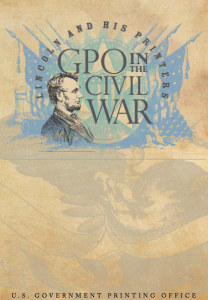 The U.S. Government Printing Office (GPO) first began operations on March 4, 1861, the same day as President Abraham Lincoln’s inauguration. The GPO set up shop in a printing plant originally built by Cornelius Wendell, a longtime contract printer for Congress. Located at the corner of North Capitol and H Streets NW, the facility was the largest printing plant in Washington and one of the largest in the U.S. at that time.
The U.S. Government Printing Office (GPO) first began operations on March 4, 1861, the same day as President Abraham Lincoln’s inauguration. The GPO set up shop in a printing plant originally built by Cornelius Wendell, a longtime contract printer for Congress. Located at the corner of North Capitol and H Streets NW, the facility was the largest printing plant in Washington and one of the largest in the U.S. at that time.
The first head of the GPO was John D. Defrees, an Illinois newspaper publisher, politician, and friend of President Lincoln. With the outbreak of the Civil War, the GPO grew rapidly to keep pace with military and civilian printing needs. In 1864, GPO employees participated more directly in the war when Company F of the Interior Department Regiment, comprised of GPO printers and pressmen, marched into Northwest Washington to help repel Confederate forces under General Jubal Early.
Lincoln and His Printers : GPO in the Civil War is a brochure published by the GPO to accompany an exhibit of the same name. It is a short history of the GPO during the Civil War years, and includes pictures of some of the people, buildings, and documents (including the Emancipation Proclamation) that were most important during the early years of the GPO. Click on the title above to view the full-text online, or visit the Nebraska Library Commission to find this and many other state and federal documents.
Small Business Administration at work in Nebraska…
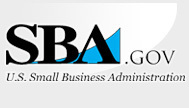 Nebraska beef plant reopens, creates jobs thanks to SBA International Trade Loan financing
Nebraska beef plant reopens, creates jobs thanks to SBA International Trade Loan financing
For five years, the meatpacking plant in this part of ranch country in northwest Nebraska stood vacant and silent. Now, thanks in part to new owners and SBA financing, the plant has re-opened as a supplier for organic, natural grass-fed, premium and halal beef for domestic and overseas markets, and given a small town a big economic jolt.
Open Range Beef purchased the shuttered plant from the city of Gordon in late June 2013, and have spent the last few months upgrading the operation with state-of-the-art equipment and material. With the purchase and re-opening, the business also created 100 new jobs, said co-owner Pat Shudak (pictured, left), a big deal for a town of around 1,800 people.
The company was approved for $3.8 million in financing in April using the SBA’s International Trade Loan program, one of only four guaranteed loans of this type in the four-state region this fiscal year. 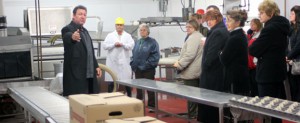
The 36,000-square foot plant expects to hit a target of 250-300 head of cattle per day, or about $120 million worth of cattle per year, from local ranchers for its USDA-certified beef processing operation. Open Range Beef chiefly will serve Rastelli Foods, a New Jersey-based humane and sustainable agricultural company with high-end clients in both domestic and overseas markets.
Serving as a hub for specialty and organic meats for export, the company had to buy more expensive equipment such as hot water to clean carcasses, and follow strict guidelines. For example: there’s a long list of specific requirements for meat to be certified halal if it’s to be exported to Muslim customers.
“We’ll be sending beef to Japan, Hong Kong, the Middle East, Europe,” Shudak added. “The qualifications and restrictions are long; some dictate cattle only be 30 months or younger, and some countries don’t allow importing certain parts, such as livers, kidneys and parts outside the main cuts of meat. Each country’s certification is different.”
Because the plant is mid-sized, explained co-owner Jill Noetzelman, “we can switch gears whenever we need to for custom slaughtering, which benefits meat producers and the packer,” a competitive advantage over bigger plants, such as those which process up to 5,000 head of cattle a day. Those enormous operations leverage economies of scale with relatively inflexible work flows can’t allow for smaller, specialty orders.
As a result, Shudak claimed, Open Range Beef’s operation expects to have a direct positive impact of nearly $5 million a year and an overall economic impact of $22 to 25 million a year for the area.
“We also purchase our supplies as much as possible locally from retail, lumber yards and hardware stores,” Noetzelman said, a move which generates significant secondary economic benefits for the town from the plant’s presence.
“It’s too soon to say what our revenues look like,” Shudak added. But the outlook is bright: “The cattle market was at an all-time high when we took over, and it’s even looking a lot better now.”
Ranchers also will benefit with Open Range Beef’s location: the next closest packing plants for livestock producers in the area are Lexington and Hastings, Neb., and Fort Morgan, Colo., some hundreds of miles away.
Shudak said the ownership team moved from building a solar development company in Hawaii as part of its investment portfolio to the specialty beef industry after a high school friend of Shudak’s mentioned he had considered going into the fast-growing specialty beef business. Private equity supplied the financing to purchase the plant, but the team needed more for the equipment, operating capital and cattle purchases.
“This wasn’t a conventional loan like for a retail or storefront business,” Noetzelman said. So they turned to BizCapital, a multi-state lender which offers competitive loans to small- and medium-sized companies located in underserved markets, and one of Missouri’s Lenders of the Year for 2012, and First Bank of the Lake, an Ozarks-based lender experienced with SBA applications. With their help over the six-month application process, Open Range Beef was approved for $3.8 million in financing in April 2014 using the SBA’s International Trade Loan program, one of only four guaranteed loans of this type in the four-state region this fiscal year. This program which offers a 90 percent guarantee to the lender, offers access to capital for a small business in a position to expand existing export markets or develop new export markets.
“I don’t believe we would have put this together without the SBA,” Shudak said. “The nice thing is that we had a lot of equity in this plant and had real strong appraisals. In approving our loan, the SBA focused on job creation, helping the local economy, exporting, things that really matter to our business. Without the SBA, we found banks weren’t keen on certain businesses, and packing houses were one of them.”
And for a good reason: the business of beef harvesting and processing industry is cash-intensive and a volatile commodity-based one.
Shudak said future plans call for expansion of the plant’s cooler space and adding more jobs as the company’s capacity grows.
“The majority of our employees we have now we first hired at the beginning for construction work during the renovation,” Shudak said. “When we started the remodeling there was a real lack of available construction crews in the area, so we brought in a construction manager and hired former plant workers and trained them.”
When they finished the construction work, those same employees put down their hammers and put on their frocks, and Shudak noticed “there’s a huge amount of pride in the building, because they did the work to bring it back.”
While the town’s residents, along with members from the nearby Oglala Sioux Tribe reservation, who filled many plant positions in the past, make for a healthy labor pool, the plant’s promised growth is enough so a challenge for Gordon’s city manager is to address potential housing shortages incoming workers likely are to face.
Open Range Beef also points to the area’s diverse work force as a benefit, with Native American, African-American, and Guatemalan and other Hispanic employees of all working ages on staff, and young professionals in the area also seeking to be part of the business.
“You know, our philosophy coming into the business here is that you treat your employees like family, appreciate each individual, and create the positive work environment where employees who spent 8-10 hours a day here want to come to work here,” Noetzelman said.
Reprinted from SBA.gov. For more information about the U.S. Small Business Administration. and how it’s loans and grants can help, visit SBA.gov/Loans & Grants.
Nebraska Sesquicentennial Commission
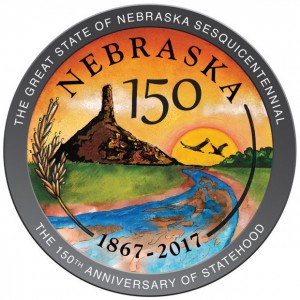 One of the new Nebraska laws going into effect today, July 1st, 2014, will create a state Sesquicentennial Commission to plan for Nebraska’s 150th anniversary as a state in 2017. The Nebraska Sesquicentennial Commission will consist of 17 members appointed by the governor. Starting today, Gov. Dave Heineman will have 60 days to appoint the members.
One of the new Nebraska laws going into effect today, July 1st, 2014, will create a state Sesquicentennial Commission to plan for Nebraska’s 150th anniversary as a state in 2017. The Nebraska Sesquicentennial Commission will consist of 17 members appointed by the governor. Starting today, Gov. Dave Heineman will have 60 days to appoint the members.
The Sesquicentennial seal, at left, blends the Platte River with Chimney Rock and sandhill cranes. It will be used for all official events and documents relating to Nebraska’s celebration of 150 years of statehood. Information about early planning and fundraising efforts is available online at Nebraska150.org
Doc Spot: Drought Monitor Map
Good news! Drought continues to lessen across Nebraska, according to the latest Drought Monitor Map for the week ending June 22, 2014:
This map is just one of the many resources provided by the National Drought Mitigation Center, which is housed at the University of Nebraska-Lincoln. Visit the website for news, state and national maps, monitoring tools, information for kids, and resources for teachers.
Registration now open for 25th Annual Nebraska Data Users Conference
 Registration is now open for the 25th Annual Nebraska Data Users Conference, August 19, 8:00 a.m. – 4:30 p.m.
Registration is now open for the 25th Annual Nebraska Data Users Conference, August 19, 8:00 a.m. – 4:30 p.m.
Attend in-person in Omaha or via webcast to learn about the latest data products, methods of access, and applications.
This year’s program includes:
- A special focus on aging and vital statistics.
- Release of the initial results from the 2014 Nebraska Metro and Rural Polls.
- Expanded hands-on computer trainings on American FactFinder, data websites/tools, and data mapping.
- Facilitated lunchtime discussions, back by popular demand.
Attend the conference to learn about:
- Census data basics.
- Powerful online data tools.
- The latest population trends.
- Poverty and the new poverty measure.
- Migration data and brain drain/gain.
- Library resources and STEM.
- Using data to apply for grants or to reach your audience.
Register early for full session options. The hands-on computer trainings have 30-person limits and will fill up fast.
Visit the website or view the attached flier for more details. Register at http://www.unomaha.edu/cpar/register.php.
2014 – 2015 Navigator Funding Announcement
![]() The Centers for Medicare and Medicaid Services (CMS) has announced a recent funding opportunity intended to support Navigators providing health insurance enrollment assistance in Federally-Facilitated and State Partnership Marketplaces in 2014 – 2015. You may learn more about this opportunity here: http://www.grants.gov/web/grants/search-grants.html?keywords=93.332.
The Centers for Medicare and Medicaid Services (CMS) has announced a recent funding opportunity intended to support Navigators providing health insurance enrollment assistance in Federally-Facilitated and State Partnership Marketplaces in 2014 – 2015. You may learn more about this opportunity here: http://www.grants.gov/web/grants/search-grants.html?keywords=93.332.
Many libraries have actively partnered with Navigator organizations in their communities to support outreach, education, and enrollment in the health insurance Marketplace established as part of the Affordable Care Act. Libraries have contributed in many ways, such as providing space for Navigator information sessions, making library computers available for enrollment sessions, and sharing resources from Navigators in person and online. HealthCare.gov defines Navigators as: An individual or organization that’s trained and able to help consumers, small businesses, and their employees as they look for health coverage options through the Marketplace, including completing eligibility and enrollment forms. These individuals and organizations are required to be unbiased. Their services are free to consumers.
You can learn more about Navigators and engaging other community health partners in the Partner Engagement section of WebJunction’s Health Happens in Libraries project site.
25th Annual Data Users Conference
 The Center for Public Affairs Research has announced that the date for the 25th Annual Data Users Conference is TUESDAY, AUGUST 19, 2014. More information about the agenda and registration will be available soon.
The Center for Public Affairs Research has announced that the date for the 25th Annual Data Users Conference is TUESDAY, AUGUST 19, 2014. More information about the agenda and registration will be available soon.
CPAR is a research and community outreach unit of the UNO College of Public Affairs and Community Service. Survey research support is a key component of CPAR’s mission. CPAR is also the lead agency for the Nebraska State Data Center (NSDC) Program. This program is a cooperative program between the U.S. Census Bureau and individual states, and has resulted in CPAR taking an active role in analyzing and disseminating information from the 2010 Census.
The State Data Center (SDC) Program is one of the Census Bureau’s longest and most successful partnerships. It is a cooperative program between the states and the Census Bureau that was created in 1978 to make data available locally to the public through a network of state agencies, universities, libraries, and regional and local governments. The SDCs and their networks are official sources of demographic, economic, and social statistics produced by the Census Bureau.
The NSDC network includes 4 coordinating agencies and 20 affiliate agencies located throughout the state. Download the list of NSDC Affiliates, including phone and email contact information to find an affiliate in your area
The NSDC makes data accessible to state, regional, local and tribal governments, and non-governmental data users at no charge or on a cost-recovery or reimbursable basis as appropriate.
Grant Money Available for Transporting Elderly and Persons with Disabilities
 The Nebraska Department of Roads has announced funds are now available to private nonprofit organizations and governmental entities for transportation needs of elderly persons and persons with disabilities for whom mass transportation services are unavailable, insufficient or inappropriate. Eligible applicants include private nonprofit organizations incorporated within the state and governmental entities. Governmental entities must certify that there are no nonprofit agencies in the service area readily able to provide the service.
The Nebraska Department of Roads has announced funds are now available to private nonprofit organizations and governmental entities for transportation needs of elderly persons and persons with disabilities for whom mass transportation services are unavailable, insufficient or inappropriate. Eligible applicants include private nonprofit organizations incorporated within the state and governmental entities. Governmental entities must certify that there are no nonprofit agencies in the service area readily able to provide the service.
The Federal Transit Administration’s Section 5310 program is a Federal Capital Grant program that requires a local match and is managed by the Department of Roads. The program is designed to provide assistance for purchase of vehicles and related equipment. Applicants may also request funding for operating assistance, purchase of service, and technology.
For further information and to request application forms, contact Wayne Masek at (402) 479-4369 or Kari Ruse at (402) 479-4694, Rail and Public Transportation Division, P.O. Box 94759, Lincoln, NE 68509-4759.
Requests for application forms must be received by 4:30 p.m. on Friday, July 11, 2014.
Doc Spot: Disaster Loans from the Small Business Administration
 Did you know that the SBA provides low-interest disaster loans to homeowners, renters, businesses of all sizes, and most private nonprofit organizations? SBA disaster loans can be used to repair or replace the following items damaged or destroyed in a declared disaster: real estate, personal property, machinery and equipment, and inventory and business assets.
Did you know that the SBA provides low-interest disaster loans to homeowners, renters, businesses of all sizes, and most private nonprofit organizations? SBA disaster loans can be used to repair or replace the following items damaged or destroyed in a declared disaster: real estate, personal property, machinery and equipment, and inventory and business assets.
To find out more, and to apply for a loan, visit SBA.gov Disaster Loans
Recollections
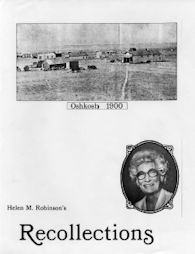 How good is your memory? The town of Oshkosh NE was lucky to have a resident with a great memory and willingness to document and share what she remembered. In June of 1984 someone from the Garden County News office contacted Helen M. Robinson asking her to write about her personal memories of different business in Oshkosh beginning in 1920. After thinking it over Helen agreed but with one condition. “That condition is, that it would also become a community project, to attempt to get a written record of the Oshkosh businesses from 1920 to the present time – 1984.” (Chapter 1; Page 1) I don’t know if she realize when she agreed how large of a project this would turn into. Her articles appeared in the Garden Count News from June 14, 1984 to December 4, 1986.
How good is your memory? The town of Oshkosh NE was lucky to have a resident with a great memory and willingness to document and share what she remembered. In June of 1984 someone from the Garden County News office contacted Helen M. Robinson asking her to write about her personal memories of different business in Oshkosh beginning in 1920. After thinking it over Helen agreed but with one condition. “That condition is, that it would also become a community project, to attempt to get a written record of the Oshkosh businesses from 1920 to the present time – 1984.” (Chapter 1; Page 1) I don’t know if she realize when she agreed how large of a project this would turn into. Her articles appeared in the Garden Count News from June 14, 1984 to December 4, 1986.
In 1985 Helen’s children decided that their mom’s newspaper articles should be placed in a more permanent form. After the last article was printed in 1986 they began working on compiling the articles into a book. For continuity and ease of reading they combined the articles and created chapters. The completed book was finished in July 1987 which also happened to be about the same time Helen celebrated her 80th birthday.
Today everyone can read and enjoy Helen M. Robinson’s Recollections. In 2014 the Garden County Historical Society, along with the Oshkosh Public Library, worked with the Library Commission to digitize the book and make it available in the Nebraska Memories. The book can be found at: http://memories.nebraska.gov/cdm/landingpage/collection/gchs
Reading the book I learn that Oshkosh has supported a wide variety of businesses over the years including barbers, shoe & harness repair, department stores, flower & gift shops, bakeries, cream stations, sales barns, cafes, manufacturing, morticians, cleaning establishments, ice cream parlors, hotels, hardware stores and filling stations. The amount of information Helen provides about each business is amazing. Many of these businesses changed locations over time and she documented all of their different locations, the names of the owners and employees.
Here is just a small portion of what I learned just about the banks in Oshkosh. In 1917 a second bank opened in town and was named the Oshkosh State Bank. It was located in a small building on the east side of Main Street until a two-story brick building was completed on the southwest corner of Main and Avenue C. The picture at the right shows the building during construction. In 1924 the Oshkosh State Bank and the Nebraska State Bank merged under the name Nebraska State Bank. The Nebraska State Bank moved its offices from their building which was located a block north to the brick building built by the Oshkosh State Bank. The newly formed bank was managed by Mr. Farrell.
My short paragraph is far from the complete history of the banks in Oshkosh. There is almost 60 more years’ worth of information in the book just about the banks. The information includes the names of many of the owners and employees starting in 1904 and continues on until the early 1980’s. Helen even provided the maiden names for many of the female employees. More information about the banks can be found in Chapter 10 of the book.
On a side note I do wonder what type of negotiations took place in 1924 when the banks merged. How did they decide to go with the name Nebraska State Bank yet at the same time locate their business in a brick building that had the name Oshkosh State Bank written in stone above the door? Looking at Google Map’s Street View you can see that the bank building is still standing 97 years later with the name Oshkosh State Bank still visible.
Reading through the book I was happy to see that Helen got her wish and her columns did turn into a community project. Throughout the book there are multiple references to what other folks remembered. Helen also included letters other folks sent her. One letter that I enjoyed was from Betty (Brennan) Beam. Betty’s letter talked about the first tea house in Oshkosh. She described it as “dark and without paint. Within was the odor of burning coals and soot.” As you read you realize the tea house she was describing was actually Jim Monshan’s blacksmith shop where the farmers would gather for a cup of tea. Betty said “Jim Monahan was English enough to make the tea and Irish enough to be blessed with quick wit and a ready answer.” (Chapter 7; Page 25)
I hope my comments about the book Helen M. Robinson’s Recollections have piqued your interest. The book is over 300 pages long. There are a lot of great memories of businesses and business people of Oshkosh. If you don’t have time to read the book cover to cover you can always search the book for specific name, business or any piece of information you think maybe included in the book.
Visit Nebraska Memories to search for or browse through many more historical images digitized from photographs, negatives, postcards, maps, lantern slides, books and other materials.
Nebraska Memories is a cooperative project to digitize Nebraska-related historical and cultural heritage materials and make them available to researchers of all ages via the Internet. Nebraska Memories is brought to you by the Nebraska Library Commission. If your institution is interested in participating in Nebraska Memories, see http://nlc.nebraska.gov/nebraskamemories/participation.aspx for more information, or contact Beth Goble, Historical Projects Librarian, or Devra Dragos, Technology & Access Services Director.
Data Doodles: New Statistics Edition
 Have you been looking for Nebraska public library statistics for the 2012-2013 fiscal year? Well, search no longer because they are now available on the Library Commission’s website at http://nlc.nebraska.gov/stats/. Scroll down to the Library Statistical Data section for links to:
Have you been looking for Nebraska public library statistics for the 2012-2013 fiscal year? Well, search no longer because they are now available on the Library Commission’s website at http://nlc.nebraska.gov/stats/. Scroll down to the Library Statistical Data section for links to:
- An Excel spreadsheet with the complete data from the FY 2013 Public Libraries Survey,
- A one-page summary of the annual data in Excel or Adobe Reader format,
- An updated Nebraska Public Libraries Directory with the latest data, and
- A Nebraska map with location markers and pop-up statistics for each public library
I want to thank to everyone who completed and submitted an annual library survey, because this statistical information would not be available without your hard work.
GRANTS.GOV WEBINAR
 GRANTS.GOV is the Federal Government’s online portal where all 26 Federal grant-making agencies go to post their grant funding opportunities and where applicants go to find and apply for those opportunities. There are three key areas with which applicants must become familiar: the registration process, how to find funding opportunities that match interests, and how to apply for those opportunities.
GRANTS.GOV is the Federal Government’s online portal where all 26 Federal grant-making agencies go to post their grant funding opportunities and where applicants go to find and apply for those opportunities. There are three key areas with which applicants must become familiar: the registration process, how to find funding opportunities that match interests, and how to apply for those opportunities.
A FREE live Webinar, Everything You Want to Know about GRANTS.GOV, from the U.S. Census Bureau, will be offered Wednesday, June 25, 2014.
Register for “Everything You Want to Know about GRANTS.GOV“.
- Start Time: 1:00 pm Eastern Time (12:00 Central)
- Duration: 1 hour
Registration is required. Space is limited on a first-come, first-served basis. Upon registering, an email confirmation of registration will include instructions for joining the webinar.
**ATTENTION! A special note for registrants with mail filters – especially Federal and military agencies**
Upon registration, you should almost immediately receive an email from our eLearning system. If you do not receive that email, it may be that security settings, firewalls, or spam filters prevent the transmission of this and other important notifications from the webinar system. Please notify GPO at FDLPOutreach@gpo.gov if you do not receive a registration confirmation in your email.
Registration confirmations for the webinar will be sent from sqldba@icohere.com. To ensure delivery of registration confirmations, registrants should configure junk mail or spam filter(s) to permit messages from that email address.
